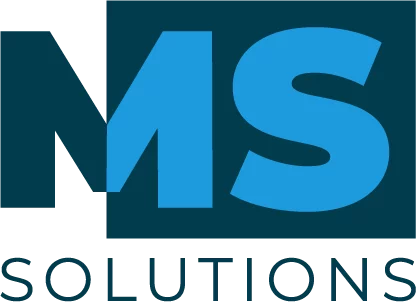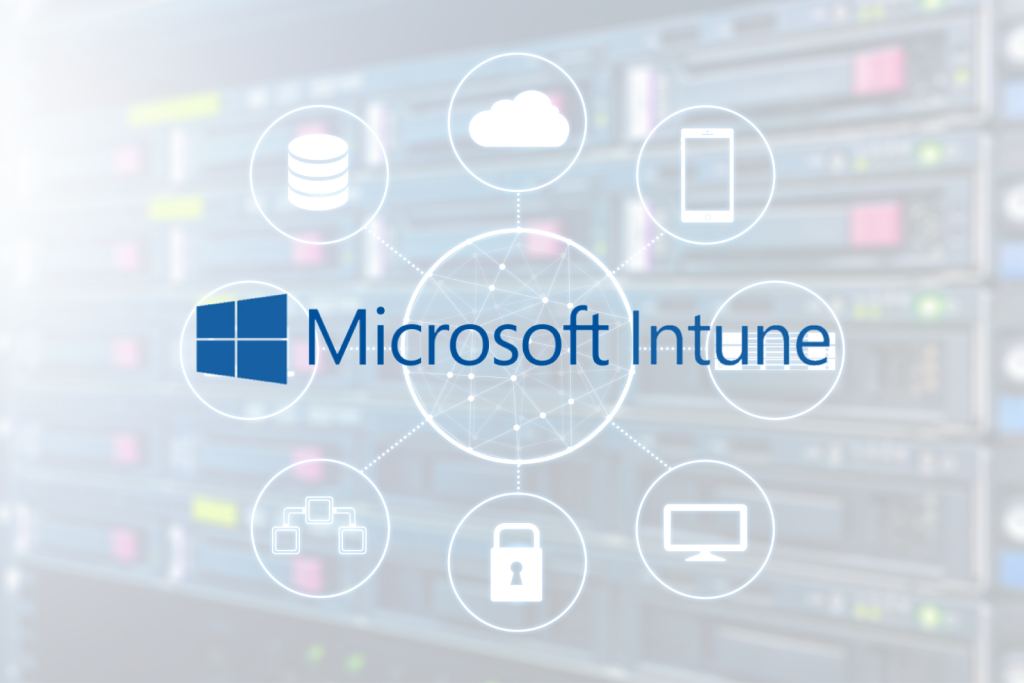In a world of constant technological change, where working patterns are shifting towards hybrid configurations, including teleworking, and where equipment is evolving rapidly, thanks in particular to the “bring your own device” (BYOD) model, effective management of devices and applications has become an imperative. Microsoft Intune is emerging as a powerful tool that goes far beyond simple device management. It’s a solution that simplifies and secures the business environment, wherever your teams operate.
In our recent webinar entitled “Microsoft Intune, for secure, centralized management of your devices” (french only), we delved into the depths of this robust system. We explored how Intune could be the answer to your device management needs, covering its overview, objectives and benefits, as well as its impressive features. We also discussed its target audience, and examined the essential prerequisites for preparing your environment. What’s more, we’ve analyzed its compatibility with other Microsoft applications, which can be crucial for seamless integration into your existing ecosystem.
Read on to find out how this solution can make your organization more agile, secure and efficient.
Endpoint management is at the heart of the digital transformation of today’s organizations. Microsoft Intune is emerging as a key player in this revolution, offering a cloud-based endpoint management solution designed to simplify and secure organizations’ IT infrastructure.
A general view
Microsoft Intune, powered by the Microsoft Cloud, enables IT teams to centrally manage, assess and protect their organization’s entire IT ecosystem in one place. This unified approach to endpoint management extends to mobile devices, desktops and even servers, offering complete visibility and control.
Goals and benefits
- Unified endpoint management: Microsoft Intune aims to simplify the complexity of endpoint management by consolidating all aspects of the task into one intuitive interface.
- Securing devices and data: The ultimate goal is to ensure that your organization’s devices and data are protected, wherever they may be. Intune enables you to implement robust security policies to reinforce protection.
- Manage devices and applications: Mobile device management (MDM) and application management (MAM) are essential pillars of Microsoft Intune. You can control device functionality, manage updates and apply application-specific security policies.
- Simplified endpoint security: Security threats are constantly evolving, but Intune simplifies the management of security measures, ensuring that your devices and data are protected against the latest threats.
- Speed up and simplify device configuration: Seamless integration with devices and applications enables fast, smooth configuration, reducing friction when introducing new equipment.
- Improved user productivity: users benefit from a smoother experience thanks to seamless management of applications and devices, for greater productivity.
- Ensures security policy compliance: Security policies can be easily enforced and monitored to ensure your organization is compliant with current regulations.
Key features
To achieve these goals, Microsoft Intune offers a range of powerful features:
- Mobile Device Management (MDM): This feature enables organizations to proactively manage mobile devices, by monitoring functionality, performing updates and applying device-specific security policies.
- Content and data management (MDM): Intune protects sensitive data on mobile devices and PCs by managing access to data and guaranteeing its security.
- Application Management (MAM): This functionality enables organizations to manage applications on mobile devices and PCs, controlling access to applications, enforcing security policies and collecting usage data.
- Security management (MAM): Intune protects sensitive data on mobile devices and PCs by managing access to applications and data, while providing protection against threats.
In the following sections of this article, we’ll take a deeper dive into these features and explain how they can be implemented to meet your organization’s specific needs.
Who Microsoft Intune is for: a solution for all businesses
For all company sizes
Microsoft Intune is designed to meet the endpoint management needs of all businesses, whatever their size. Whether you run a small or medium-sized enterprise (SME), a mid-sized enterprise (MSE) or a large corporation, Intune offers a flexible, scalable solution to meet your specific device and application management requirements.
All business sectors
Microsoft Intune’s versatility transcends industry boundaries. Whatever your industry, Intune can be tailored to meet your needs. Whether you work in finance, healthcare, education, manufacturing, or any other sector, Intune provides the tools you need to effectively manage your endpoints.
Users of all types of device
Microsoft Intune caters for a variety of users, whether they use mobile devices, desktops, or even virtual endpoints. One of the key strengths of this solution is its ability to manage a diverse range of devices, ensuring a seamless experience for all users, regardless of the type of device they prefer.
All organizations looking for centralized device management
Microsoft Intune is ideal for all organizations looking to centralize the management of their devices. Whether you want to strengthen endpoint security, simplify device configuration, or ensure compliance with security policies, Intune offers a complete solution to meet these challenges.
Concrete examples of use
« Modern Workplace » Setting up
One of the most widespread use cases for Microsoft Intune is the implementation of the “Modern Workplace”. This approach aims to create a modern digital workplace, where employees can work seamlessly and productively, no matter what device they’re using. Intune plays a central role in ensuring that devices are secure, compliant with organizational policies, and configured for optimal user experience.
Consistent user experience
Intune makes the user experience seamless, whether it’s a tablet, laptop, cell phone, or even a virtual endpoint. This means that employees can move seamlessly from one device to another, without interrupting their work.
Continuity of work
Another valuable use of Intune is its ability to offer work continuity. Users can move from one device to another while maintaining their tabs, applications and progress on current tasks. This maximizes efficiency and enables teams to remain productive, whatever the circumstances.
Automated device configuration
Finally, Intune greatly simplifies the configuration of new devices. By automating configuration steps, it significantly reduces the time needed to commission new devices, which is essential for organizations seeking to maximize their operational efficiency.
As we explore these real-life examples, it becomes clear that Microsoft Intune offers considerable versatility and power, whatever the context of use. In the following sections of this article, we’ll take a deeper dive into Intune’s specific features and how they can be implemented to meet your organization’s particular needs.
Preparing your environment for Microsoft Intune
Assessment of prerequisites
When considering the adoption of Microsoft Intune within your organization, the first crucial step is to assess the prerequisites and prepare your environment for a smooth integration. This initial phase can vary in complexity depending on the current state of your IT infrastructure.
Existing server infrastructure
The first question to ask is whether your organization already has a server-based infrastructure. If so, the scenario may be different depending on whether or not Microsoft 365 is used in this infrastructure.
- With Microsoft 365 :
If your organization already uses Microsoft 365, the transition to Microsoft Intune is generally simpler. You already have an integrated Microsoft platform, making it easy to extend your endpoint management capabilities. In this case, all you usually need to do is frame the existing platform by enabling Intune’s features, enabling centralized and consistent management of your devices.
- Without Microsoft 365 :
If your organization doesn’t have Microsoft 365 in its existing server infrastructure, integrating Microsoft Intune may require setting up links between the current infrastructure and the new environment. This step can be more complex and involve technical adjustments to ensure a smooth transition.
Compatibility with other Microsoft applications
One of the key benefits of Microsoft Intune is its tight compatibility with other Microsoft applications. This seamless integration allows you to take full advantage of Microsoft 365 features, including those related to security and productivity.
Compatibility with other vendors and cybersecurity products
In addition to its seamless integration with Microsoft solutions, Intune is also compatible with other vendors and cybersecurity products. This compatibility ensures that you can continue to use existing security tools within your organization, while strengthening endpoint management with Intune.
Focus on the complete Microsoft 365 platform
However, it’s important to note that it’s often best to focus on the complete Microsoft 365 platform to take full advantage of the Microsoft ecosystem. By using Intune in conjunction with other Microsoft 365 components, such as Microsoft Defender for Endpoint, you can create a complete security and management infrastructure that offers comprehensive protection for your endpoints.
In short, preparing your environment for Microsoft Intune requires a careful assessment of the prerequisites based on your existing infrastructure. Whether you’re already using Microsoft 365 or have other cybersecurity solutions in place, Intune can integrate seamlessly to strengthen your endpoint management. By taking a considered approach and fully leveraging the Microsoft ecosystem, you can effectively prepare to take advantage of this powerful endpoint management solution.
In short
In conclusion, Microsoft Intune is proving to be a must-have endpoint management solution, available in two ways: it’s included with Business Premium and certain other “Enterprise” licenses, or it’s available as an option on any license. We’ve taken an in-depth look at Intune’s general presentation, its objectives and benefits, and its key features. In addition, we’ve identified who this solution is aimed at, highlighting its relevance for organizations of all sizes, across all sectors, and for all device types. Finally, we look at the steps involved in implementing the solution, as well as its compatibility with other Microsoft applications and its various usage scenarios.
With Microsoft Intune, centralized device management and securing your organization’s IT environment are at your fingertips. Whether you’re looking to optimize productivity, strengthen endpoint security or simplify device configuration, Intune offers a complete, scalable solution. If you’re looking to make your organization more agile, secure and efficient, Microsoft Intune is your ally of choice for tackling these crucial IT challenges.
If you’d like to find out more about Microsoft Intune and its implementation, don’t hesitate to contact our team of experts!
This article presents content discussed during a previous webinar. To watch a replay of that webinar (french only), click here. Subscribe to our newsletter to receive invitations to future webinars.




